The Visual Guide to
Equine Reproduction
- Parturition
- Presentation
- Injuries to the Foal
- Cesarean Section
- Fetotomy
- Twinning
- Prolapsed Uterus
- Prolapsed Rectum
Obstetrics: Presentation
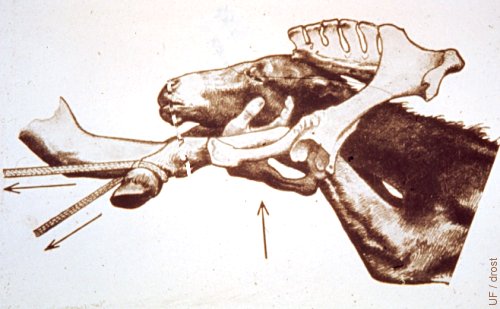
Normal Anterior Presentation.
Illustration of a normal anterior presentation with a dorsosacral position and normal posture (head resting on the knees). This configuration is most efficient in dilating the birth canal.
Drost M (1976)
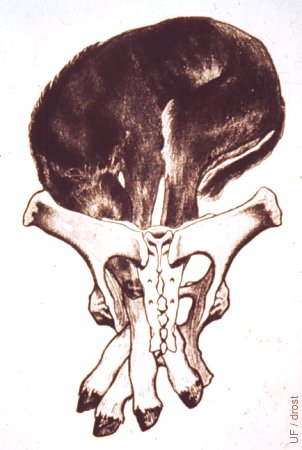
Transverse Ventral Presentation.
This near-term fetus is in a transverse ventral presentation and in a left cephalo-ilial position. This is a rare presentation because the curvature of the back of the fetus does not conform with the curvature of the uterus.
Drost M (1976)
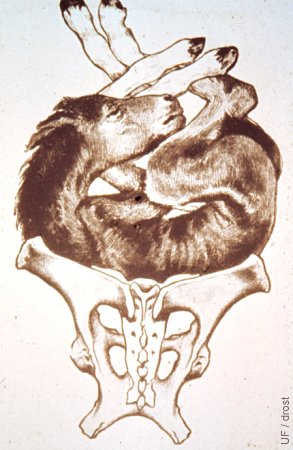
Transverse Dorsal Presentation.
This fetus is in a transverse dorsal presentation and in left cephalo-ilial position. The presentation need not be symmetrical as shown in this drawing. It may be difficult to determine whether the head is near the left or the right ilium of the mare. All one may be able to palpate is the curvature of the back. This is a rare presentation. The head and the front legs are in one horn, the hindlegs in the opposite horn.
Drost M (1976)

Mutation.
Manipulation to position the fetus in the normal dorsosacral position and normal posture (i.e. extended head, neck and forelimbs) is called mutation.
Drost M (1976)
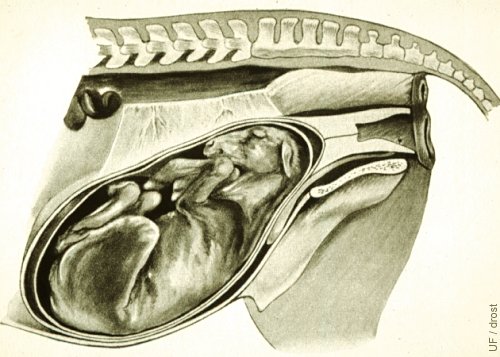
Dorsopubic Position.
During the third trimester the equine fetus is normally in a dorsopubic position. The fetus rotates to the dorsosacral position during the final couple of days of gestation in which it is assisted by the rolling of the mare.
Drost M (1976)
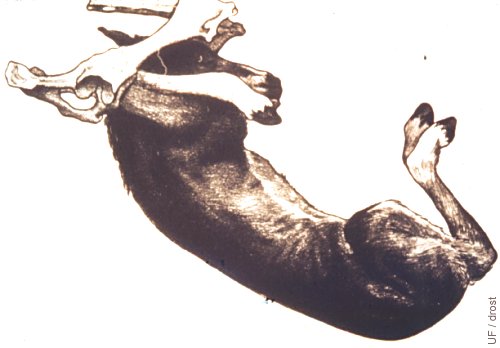
Dorsopubic Position.
During the third trimester the equine fetus is normally in a dorsopubic position. The fetus rotates to the dorsosacral position during the final couple of days of gestation.
Drost M (1976)
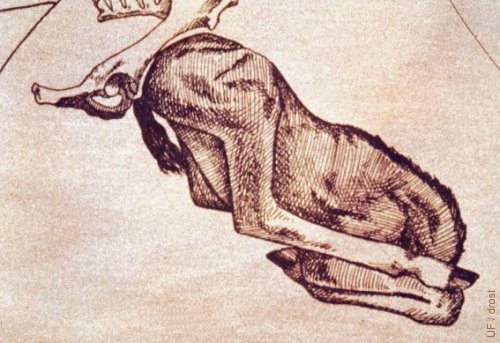
True Breech.
Posterior presentation, dorsopubic position, with both limbs retained at the hips (posture) is designated as a true breech presentation.
Drost M (1976)
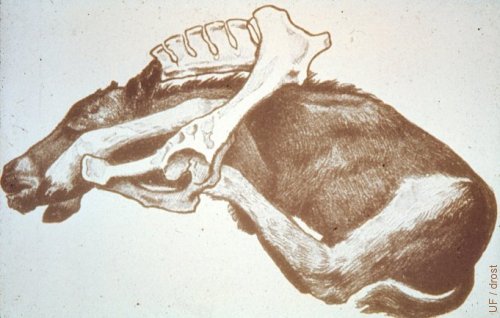
Dogsitting.
Anterior presentation, dorsosacral position, abnormal posture as the hindlegs are extended forwards and are entering the pelvic inlet. Difficult to correct. As the hind feet are repelled into the uterus they may impact below the pubic brim upon subsequent traction and puncture the wall of the uterus.
Drost M (1976)

Dogsitting Presentation.
Anterior presentation, dorsosacral position, abnormal posture as the hindlegs are extended forwards, and are entering the pelvic inlet. Difficult to correct. As the hind feet are repelled into the uterus they may impact below the pubic brim upon subsequent traction and puncture the wall of the uterus.
Drost M (1976)

Nape Position.
Occasionally the tip of the nose of the fetus is deflected downwards by the pubic brim during entry into the birth canal. Strong uterine and abdominal contractions then force the nape of the neck into the pelvic inlet. Correction consists of repulsion of the poll of the head and elevation of the muzzle.
Drost M (1976)

Eye Hook.
For live term fetuses one or two blunted eye hooks may be used. Trauma is a potential problem.
Pozor MA (2009)
